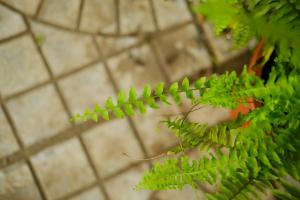How do Submerged Water Plants Perform Photosynthesis?
Submerged water plants are known for their ability to absorb and use carbon dioxide from the water and sunlight to make their own food. This process is called photosynthesis, and it is essential to the survival of these plants. But how do they perform photosynthesis? Let's find out.
The Process of Photosynthesis in Submerged Water Plants
The process of photosynthesis in submerged water plants is similar to that of terrestrial plants. However, there are a few differences due to the environment in which these plants live. Here is a breakdown of the photosynthesis process in submerged water plants:
Step 1: Absorption of Light
The first step in photosynthesis is the absorption of light. Submerged water plants have specialized pigments called chlorophylls that absorb light in the visible spectrum. The chlorophylls are located in the chloroplasts of the plant cells.
Step 2: Conversion of Light to Chemical Energy
Once the light is absorbed by the chlorophyll, it is converted to chemical energy through a process called the light-dependent reactions. This chemical energy is stored in the form of adenosine triphosphate (ATP) and nicotinamide adenine dinucleotide phosphate (NADPH).
Step 3: Carbon Dioxide Fixation
The next step in photosynthesis is carbon dioxide fixation. Submerged water plants use the carbon dioxide that is dissolved in the water they live in for this process. The carbon dioxide is combined with the ATP and NADPH produced in the light-dependent reactions to make glucose.
Step 4: Glucose Production
Glucose is the primary product of photosynthesis in submerged water plants. This glucose is used by the plant for energy and to build complex molecules such as cellulose, starch, and other carbohydrates.
The Role of Water in Photosynthesis
Water is a critical component in the photosynthesis process for submerged water plants. The water they live in provides the plants with the necessary carbon dioxide for fixation and is also the source of oxygen, which is produced during photosynthesis. The oxygen produced is released into the water, which is essential for the survival of other organisms that live in the water.
Conclusion
In conclusion, submerged water plants perform photosynthesis in much the same way as terrestrial plants. They absorb light, convert it to chemical energy, fix carbon dioxide, and produce glucose. Water is a critical component in this process, providing the plants with the necessary carbon dioxide and oxygen for survival. Understanding how submerged water plants perform photosynthesis is essential for the conservation of these plants and the ecosystems in which they live.

 how many times do yo...
how many times do yo... how many planted tre...
how many planted tre... how many pine trees ...
how many pine trees ... how many pecan trees...
how many pecan trees... how many plants comp...
how many plants comp... how many plants can ...
how many plants can ... how many plants and ...
how many plants and ... how many pepper plan...
how many pepper plan...





























